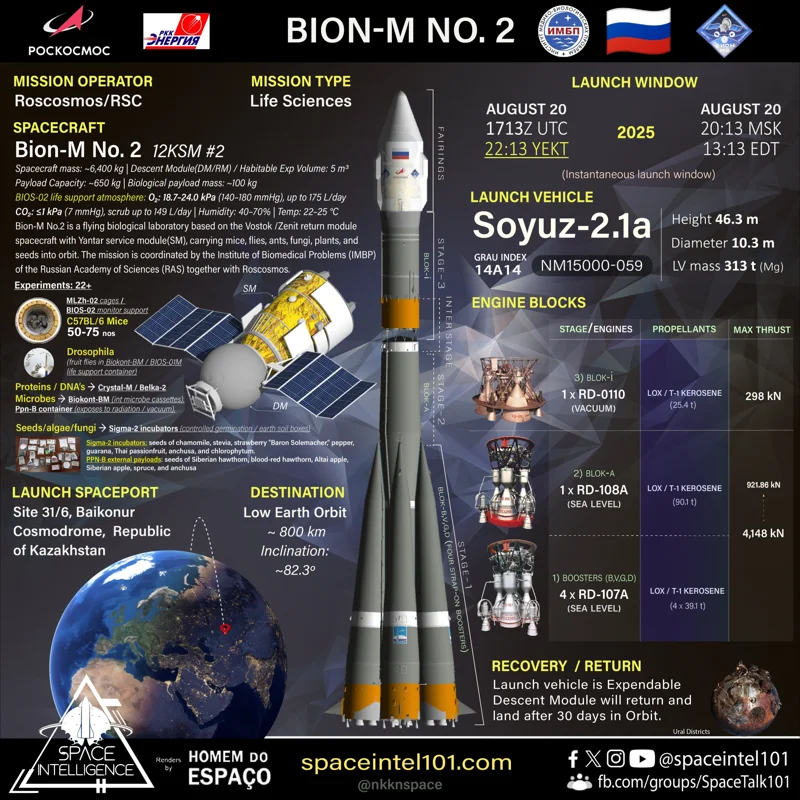Biosatellite Bion-M No. 2 launched from Baikonur with mice on board to land in Orenburg steppes
Bion-M No. 2 was launched from the Baikonur cosmodrome and spent 30 days in polar orbit. The project studies how living organisms survive flight in a high-latitude orbit, where space radiation is one third higher than in the orbit of the International Space Station, TASS reports.

There are 75 male mice, about 1,500 fruit flies, cell cultures, plants, samples of cereals, legumes and industrial crops on board the 6.4-ton apparatus. Besides, fungi, lichens, cellular materials and seeds of plants grown from seeds that flew into space on Bion-M No. 1 (2013) and Photon-M No. 4 (2014) were launched into space.
A meteorite simulator is installed outside the device, which houses living cells - with its help, scientists plan to understand life surviving in the thickness of a meteorite when passing through the dense layers of the Earth's atmosphere.
The Mouse Crew
Bion-M is equipped with 25 boxes, each of which contains three mice. The "crew" was duplicated twice on the earth: 75 mice spent a month in a vivarium, and another 75 in a stand simulating the biosatellite equipment. During the space mission, the state of living organisms was constantly monitored. According to the Institute of Biomedical Problems (IBP) the whole "crew" felt good. The animals had sensors implanted that measured different parameters in different individuals, such as temperature or heart rate.
Alexander Andreyev-Andrievsky, head of the Laboratory of Animal Phenotyping at the IBP, said in an interview with TASS that the mice are fed automatically: Russia has a technology that allows animals to be kept in space for a whole month. At the same time, 15 mice are fed dry food for the purpose of a further study of the water-salt metabolism, and 60 paste food. Of these 60 mice, nine are particularly vulnerable to radiation, nine are particularly resistant due to pharmacocorrection, and the remaining 42 respond normally to radiation.
To obtain photographs of how the mice survived the flight and how their recovery took place, they will be opened upon their return. Some of the mice will undergo necropsy in the field laboratory immediately upon landing, and the rest will be opened on the 1st, 5th, 15th and 30th days.
Working with data
The main pool of data is planned to be analyzed within a year after the mice return. Of particular difficulty is the analysis of video recordings with a volume of about 12 terabytes, the total timekeeping of which should exceed two years at the end of the flight. According to Andreyev-Andrievsky, to speed up this work scientists plan to involve specially trained AI.
Bion is a series of domestic spacecraft for biological research. In particular, scientists are interested in the effects of radiation and weightlessness on living organisms. The first such device called Cosmos-605 was launched in 1973. In 2013, the first satellite of the Bion-M series was launched into orbit. Then mice, Mongolian gerbils, geckos, snails, plants and colonies of various microorganisms visited space.
As written before, Russia is set to launch its Bion-M No2 biosatellite from Baikonur on Wednesday, August 20, at 10:13 pm from launchpad 31.
